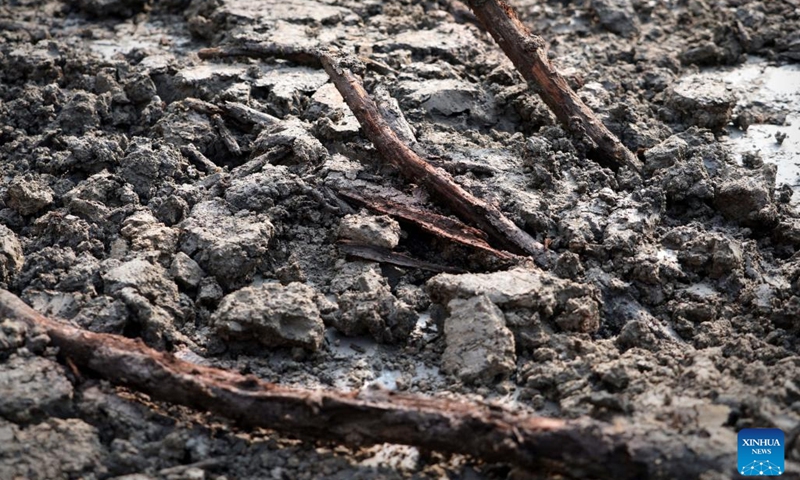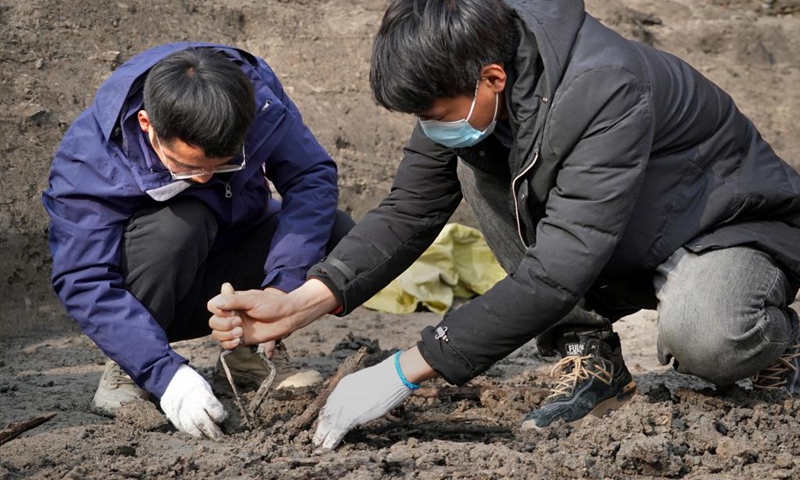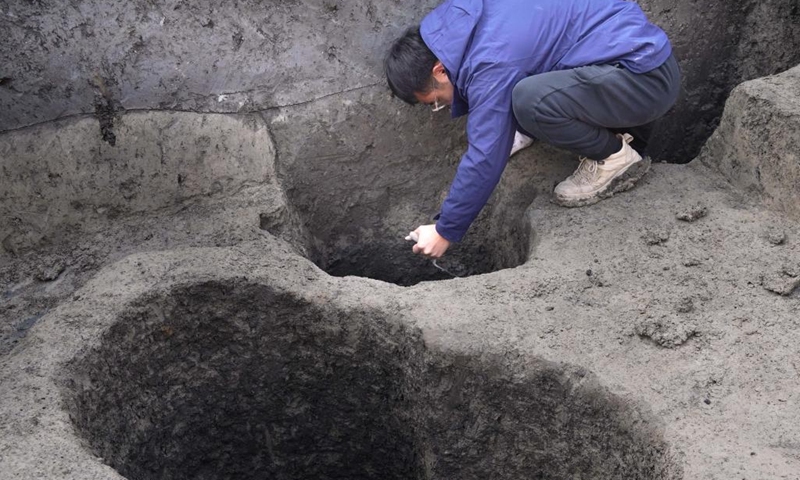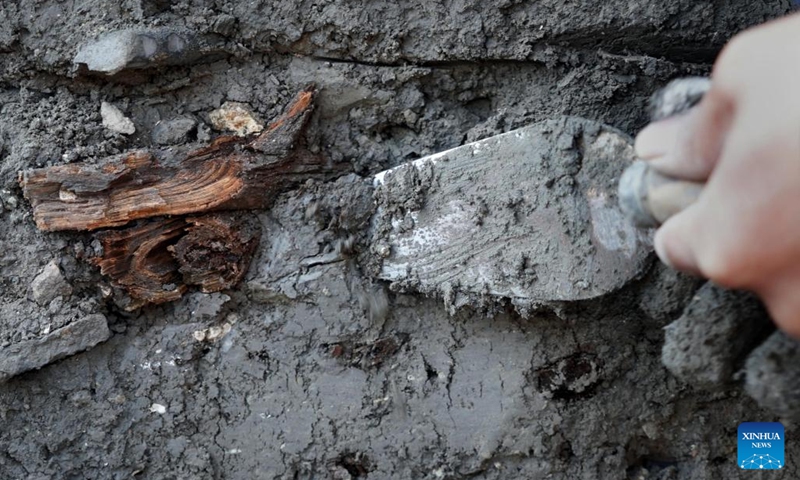
This photo taken on Jan. 6, 2023 shows cypress branches at a relic site in Shangqiu, central China's Henan Province. Archaeologists in central China's Henan Province have uncovered a sprawling layer of mulberry and cypress branches, believed to be the foundation of an ancient city wall. Covering an area of nearly 400 square meters in the city of Shangqiu, the branches are dated to the Song Dynasty (960-1279), according to the city's institute of cultural relics and archaeology.(Photo: Xinhua)

Archaeologists uncover cypress branches at a relic site in Shangqiu, central China's Henan Province, Jan. 6, 2023. Archaeologists in central China's Henan Province have uncovered a sprawling layer of mulberry and cypress branches, believed to be the foundation of an ancient city wall. Covering an area of nearly 400 square meters in the city of Shangqiu, the branches are dated to the Song Dynasty (960-1279), according to the city's institute of cultural relics and archaeology.(Photo: Xinhua)

An archaeologist uncovers ash pits at a relic site in Shangqiu, central China's Henan Province, Jan. 6, 2023. Archaeologists in central China's Henan Province have uncovered a sprawling layer of mulberry and cypress branches, believed to be the foundation of an ancient city wall. Covering an area of nearly 400 square meters in the city of Shangqiu, the branches are dated to the Song Dynasty (960-1279), according to the city's institute of cultural relics and archaeology.(Photo: Xinhua)

An archaeologist uncovers cypress branches at a relic site in Shangqiu, central China's Henan Province, Jan. 6, 2023. Archaeologists in central China's Henan Province have uncovered a sprawling layer of mulberry and cypress branches, believed to be the foundation of an ancient city wall. Covering an area of nearly 400 square meters in the city of Shangqiu, the branches are dated to the Song Dynasty (960-1279), according to the city's institute of cultural relics and archaeology.(Photo: Xinhua)
